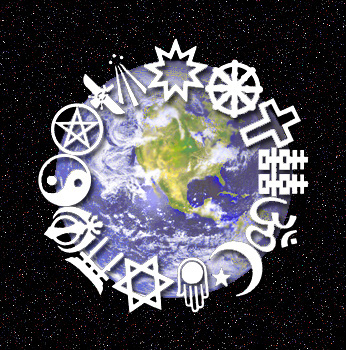| << Chapter < Page | Chapter >> Page > |

The major religions of the world (Hinduism, Buddhism, Islam, Confucianism, Christianity, Taoism, and Judaism) differ in many respects, including how each religion is organized and the belief system each upholds. Other differences include the nature of belief in a higher power, the history of how the world and the religion began, and the use of sacred texts and objects.
Religions organize themselves—their institutions, practitioners, and structures—in a variety of fashions. For instance, when the Roman Catholic Church emerged, it borrowed many of its organizational principles from the ancient Roman military, turning senators into cardinals, for example. Sociologists use different terms, like ecclesia, denomination, and sect, to define these types of organizations. Scholars are also aware that these definitions are not static. Most religions transition through different organizational phases. For example, Christianity began as a cult, transformed into a sect, and today exists as an ecclesia.
Cults , like sects, are new religious groups. In modern America this term often carries pejorative connotations. However, almost all religions began as cults and gradually progressed to levels of greater size and organization. The term cult is sometimes used interchangeably with the term new religious movement (NRM). In its pejorative use, these groups are often disparaged as being secretive, highly controlling of members’ lives, and dominated by a single, charismatic leader.
Controversy exists over whether some groups are cults, perhaps due in part to media sensationalism over groups like polygamous Mormons or the Peoples Temple followers who died at Jonestown, Guyana. Some groups that are controversially labeled as cults today include the Church of Scientology and the Hare Krishna movement.
A sect is a small and relatively new group. Most of the well-known Christian denominations in the United States today began as sects. For example, the Methodists and Baptists protested against their parent Anglican Church in England, just as Henry VIII protested against the Catholic Church by forming the Anglican Church. From “protest” comes the term Protestant.
Occasionally, a sect is breakaway group that may be in tension with larger society. They sometimes claim to be returning to “the fundamentals” or to contest the veracity of a particular doctrine. When membership in a sect increases over time, it may grow into a denomination. Often a sect begins as an offshoot of a denomination, when a group of members believes they should separate from the larger group.

Notification Switch
Would you like to follow the 'Introduction to sociology' conversation and receive update notifications?